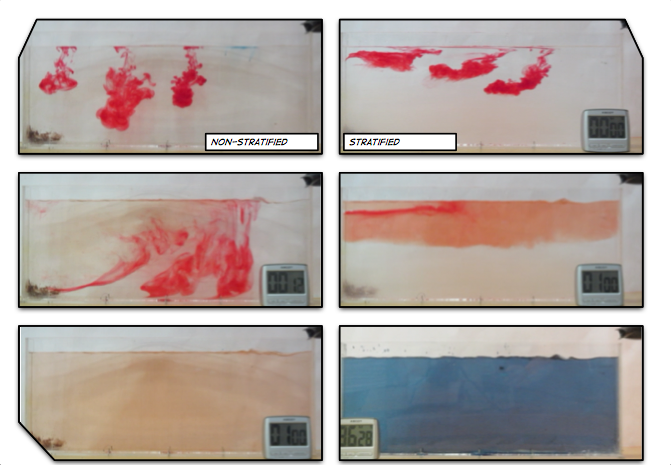A wind stress is applied to the surface of a stratified and a non-stratified tank to cause mixing.
This is an experiment that Martin and I ran at the JuniorAkademie this summer, but since I posted soooo much back than (just look for the tag “JuniorAkademie” to get an impression of what we did) I feel it never got the attention it deserves. So here we go again! :-)
We ran two experiments, one after the other.
In the first one, we took a tank full of freshwater, added dye droplets and switched on a hair dryer to force mixing through the wind stress. After about a minute, the tank was fully mixed.
In the second experiment, we created a salt stratification: salt water with approximately 35 psu, and freshwater. We then added the dye droplets. The droplets never penetrated into the salty layer but instead layered in at the interface between the two layers. We then added the wind stress.
After a minute, the surface layer was well mixed, but there was no mixing penetrating into the bottom layer. To fully mix the whole depth, the wind forcing ran for 86 minutes (and I am proud to report that my hair dryer survived this ordeal!).

Mixing in a non-stratified tank (left) and in a stratified tank (right). See the stop watch at the bottom of the panels for an impression of the time scales involved!
This is a great demonstration of how mixing is inhibited by stratification. We had been expecting to see a difference, but we were really surprised that the difference was so large. I started the experiment an hour before a meeting we had to attend, but then obviously couldn’t leave on time, because I could neither stop the experiment (seriously! How could I have stopped?) nor leave the hair dryer running while I wasn’t in the room.
Watch a short movie below and a movie containing the full time lapse even further down!